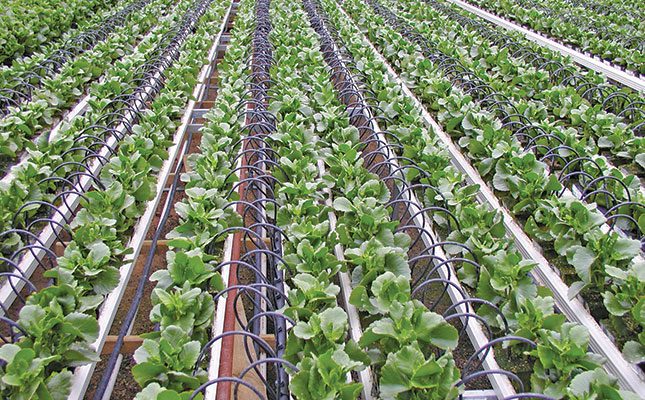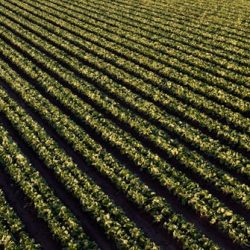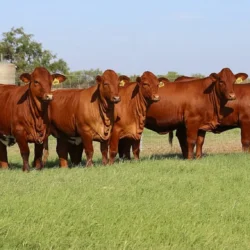The global challenge of feeding a burgeoning population with finite land and dwindling water resources demands innovative solutions. In Southern Africa, a decade-long project, “Transforming Irrigation in Southern Africa,” has shone a light on the capacity constraints plaguing irrigation schemes in Mozambique, Tanzania, and Zimbabwe. This groundwork has paved the way for a new, more nuanced approach: leveraging small-scale irrigation as fertile ground for cultivating circular food systems. Researchers involved in these transformative projects are now sharing their crucial insights.
Unearthing the Bottlenecks: Barriers to Smallholder Irrigation
The path to effective smallholder irrigation is often riddled with obstacles. According to André F. van Rooyen, Principal Scientist, Innovation Systems for the Drylands at CGIAR, a fundamental issue lies in the “lack of coherence between national policies and local realities. The objectives of governments and funders don’t always align with the livelihood goals of irrigators. Governments strive for food security and large donors tend to finance and develop large irrigation projects.”
A second critical barrier is the persistent pressure on smallholders to cultivate staple crops like maize, rice, and wheat. While these address national food security concerns, van Rooyen points out that “these crops are relatively unprofitable, especially on small irrigation plots. Our research has found that high production costs and low-value crops have rendered entire schemes dysfunctional. Fixing resulting infrastructure decay, such as leaking canals, siltation or poor-quality construction, does not address the underlying causes of poor performance. And the cycle of decline starts again.”
Poor governance of farm plots and water usage further exacerbates the problem. Sub-optimal water scheduling and mandated low-value cropping calendars, coupled with inadequate regulation of plot use and weak irrigator organisations lacking authority, create a breeding ground for inefficiency. Unclear land tenure and ill-defined roles in infrastructure management breed unfair access to vital resources, leading to conflict among irrigators.
The challenges extend beyond the farm gate. Poor market access and dysfunctional markets severely limit financial returns. Van Rooyen explains that “investment in improving yields is wasted if transport is poor or there is an over-supply of produce, leaving farmers out of pocket. This drains farmers’ incentive and capacity to invest in production.”
Finally, the vicious cycle is often completed by excessive watering, a desperate attempt to compensate for low investment in other crucial inputs. This leads to nutrient leaching, reduced nutrient efficiencies, poor fertility, low yields, and ultimately, salinisation, rendering farming unviable and leaving plots abandoned.
Empowering the Farmer: Addressing Capacity Constraints
For smallholder irrigation to flourish, the capacity constraints faced by farmers themselves must be addressed. These limitations span finance, irrigation knowledge, market understanding, and basic business acumen.
Limited financial resources restrict farmers’ ability to access credit, pay water fees, and invest in essential farm inputs and equipment. Insecure land tenure further compounds this issue, leaving them without the collateral required for formal lending, forcing reliance on expensive informal sources. Risk aversion, stemming from the very challenges they face, makes farmers hesitant to borrow.
Many farmers are new to the intricacies of irrigation and require time and guidance to master the delicate balance of water and nutrient management to prevent leaching. Access to reliable market information, adequate transport and storage facilities, and effective market linkages are often lacking. Farmers are frequently disconnected from profitable markets and rarely leverage the collective power of cooperatives. The instability and unreliability of markets, coupled with the potential for dubious quality inputs, further undermine their efforts.
Crucially, farmers often lack basic business and agronomic training, hindering their ability to identify the most profitable crops, calculate margins effectively, apply fertilisers appropriately, and adopt sustainable practices like cover cropping and crop rotation to minimise losses.
Sowing the Seeds of Change: Proposed Solutions
However, the research offers a compelling vision of transformation. Karen Parry, Circular Food Systems Project: Theme Leader Inclusion at the Australian National University, emphasizes that “our mid-term and recent research confirm that smallholder irrigation schemes can transform to produce more food. They can also support more jobs and be profitable. Schemes in Mozambique, Tanzania, and Zimbabwe have been transformed into climate smart agricultural systems. The community also has more capacity to adapt to unexpected events such as COVID-19.”
This transformation is driven by complementary interventions. Agricultural innovation platforms have proven effective in bringing together diverse stakeholders – farmers, extension officers, scheme committees, government officials, and input suppliers – to collaboratively identify and resolve local barriers to profitability. These forums empower marginalised groups, particularly youth and women, to connect with influential organisations and foster shared responsibility for effective management.
The introduction of simple soil monitoring tools has also yielded remarkable results. By providing a small number of farmers with these user-friendly devices to measure soil moisture and nutrients, researchers enabled experimentation and social learning. Van Rooyen notes the widespread adoption of these practices: “Irrigation frequency and intensity reduced, households had more time to diversify their income generation, water use and conflicts reduced, crop yields improved, and income increased.”
Other identified interventions include establishing robust market linkages, monitoring input suppliers to ensure quality, creating experimental plots to showcase new crops and best practices, providing farm business training, and implementing participatory mapping processes to resolve land disputes and reallocate unused plots.
Cultivating the Future: Policy Shifts and Integration
The research underscores that large-scale, input-intensive agricultural production systems are ill-suited for the realities of smallholder farming. What is needed, according to Henning Bjornlund, Honorary Professor, are “new systems that focus on the needs of smallholders and local economic development… They should create ways for young people in rural areas to make a living.”
The Circular Food Systems project is actively using communities around smallholder irrigation schemes as learning sites to demonstrate the power of integration. This involves combining irrigation, dryland, and livestock systems to enhance efficiency and reduce reliance on costly external inputs.
Local development opportunities are emerging through crop processing, the reuse of by-products and waste, value addition, and the identification of business synergies. Examples include using crop residues as livestock feed and processing grains into flour for local bakeries. These developments promise to generate greater economic benefit per unit of land, labour, and water.
To truly unlock the potential of smallholder agriculture, significant policy changes are also required. These include removing costly and restrictive licensing systems, discouraging rent-seeking and nepotism, facilitating land transfer to enable consolidation and generational renewal, encouraging the integration of diverse farming systems, promoting finance models tailored to small business development and climate adaptation, and aligning policy across all levels of governance while improving accountability frameworks.
The quiet revolution unfolding in Africa’s small-scale irrigation schemes offers a powerful blueprint for a more food-secure and prosperous future. By understanding the barriers, empowering farmers with knowledge and resources, and fostering supportive policies, the continent can truly unlock the immense potential of its agricultural heartland.




